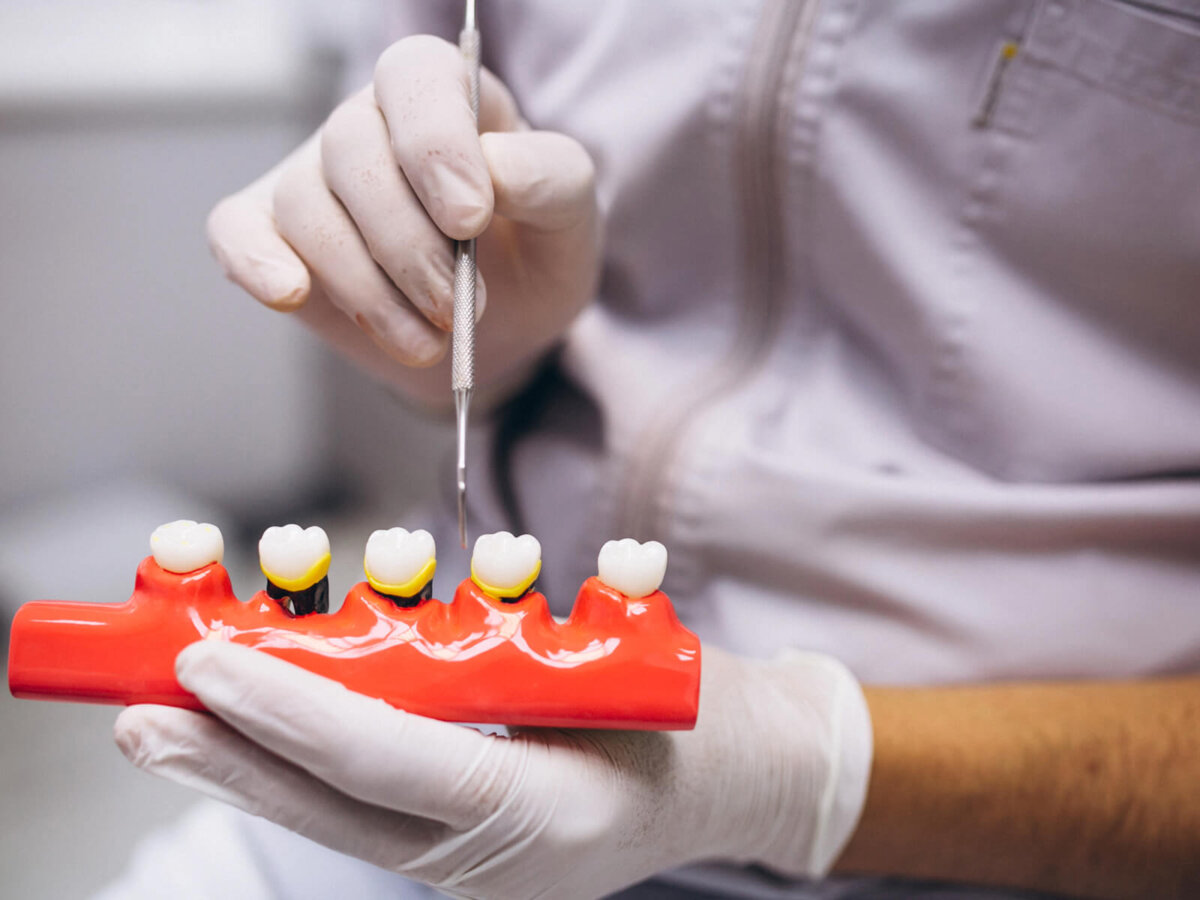Blog
Dental hygiene tips for healthy teeth & gums

How Soon Should I Get A Crown After A Root Canal?
A root canal treatment is frequently required to save a severely damaged or infected tooth. It involves removing the pulp from the tooth, washing and disinfecting its interior, and sealing it. It is essential to protect and restore the tooth’s complete function after a root canal.
Typically, this is accomplished by placing a crown on the treated molar. But how soon after a root canal should a crown be placed, and what factors influence this timeline? In this article, we will discuss the significance of obtaining a crown after a root canal, as well as the optimal timing for this vital dental restoration.
The Function of a Crown Following a Root Canal
To save a tooth that has been compromised by infection, injury, or extensive decay, a root canal treatment is performed. The infected or damaged pulp, which contains nerves and blood vessels, is extracted by the dentist during the procedure.
The next stage, following the cleaning and disinfection of the tooth’s interior, is to seal it to prevent future infection. This is typically accomplished by depositing gutta-percha, a rubber-like substance, into the root canals.
While a root canal effectively addresses the underlying issue and relieves pain, it also makes the tooth more vulnerable. Without pulp, teeth can become frail and susceptible to fractures. A crown is an essential component of root canal treatment because it serves multiple essential functions:
The crown, a dental covering, provides the treated tooth strength and protection. It protects the entire visible portion of the tooth from fracturing or crumbling by covering it entirely.
Crowns establish a tight seal over the tooth, preventing the re-entry of bacteria and lowering the risk of reinfection.
The Optimal Time to Obtain a Crown
The timing of a crown placement after a root canal is crucial for assuring the long-term success of the procedure. The general recommendation is to have a crown placed as soon as feasible after a root canal for the following reasons:
- Without a crown, the tooth is still susceptible to injury. It is crucial to prevent the tooth from fractures and infection.
- Delaying the implantation of a dental crown can increase the likelihood of complications. The longer you delay, the more bacteria and physical stress the treated tooth will be exposed to, which could lead to additional complications.
- As a general rule, a crown should be placed within a few weeks to one month following the conclusion of a root canal. However, the precise timing may vary depending on individual circumstances and factors.
Factors that Influence Timing
Several variables can affect when a crown is placed after a root canal:
- Location of the Tooth: The tooth’s location in the mandible can affect the timing. For aesthetic purposes, the front teeth visible when you smile may require a crown sooner. The restoration of the function of molars, which are used for chewing, also benefits from the prompt installation of crowns.
- Infection Severity: If the tooth has a severe infection or abscess before the root canal, it is crucial to get a crown as soon as possible to prevent reinfection.
- Individual Healing: Each individual’s healing procedure is distinct. Some patients may require additional time to ensure the tooth is secure and ready for a crown.
- Recommendation of the Dentist: Ultimately, the dentist’s evaluation and recommendation play an essential role in determining the timetable. Your dentist will evaluate the specifics of your case, including the condition of the tooth, your oral health as a whole, and the presence of complications.
Possible Consequences of Delaying a Crown
Delaying the placement of a crown following a root canal treatment may result in several potential complications, including:
- Root canal-treated teeth are more susceptible to fracture than healthy teeth. It can easily fracture without a crown, which may necessitate more extensive and expensive treatments.
- The absence of a corona increases the likelihood of reinfection. Invasion of bacteria into the tooth can result in a recurrence of the issue that the root canal was intended to resolve.
- Adjacent and opposing teeth can begin to shift into the void left by a missing tooth that has not been treated. This can disturb your bite alignment and lead to additional dental problems.
- Delaying a crown may cause pain when consuming and drinking, making it challenging to maintain a healthy diet.
Conclusion
The placement of a crown after a root canal treatment is essential for preserving the function, appearance, and long-term health of the tooth. Individual factors, such as the severity of the infection and the dentist’s recommendation, can influence the precise timing of crown placement. Generally, the crown should be placed within a few weeks to a month after the root canal.
To ensure the success of your root canal treatment and the durability of the restored tooth, it is essential to promptly schedule the installation of a crown per your dentist’s instructions. You will protect the tooth, avoid complications, and maintain a healthy and functional smile.
